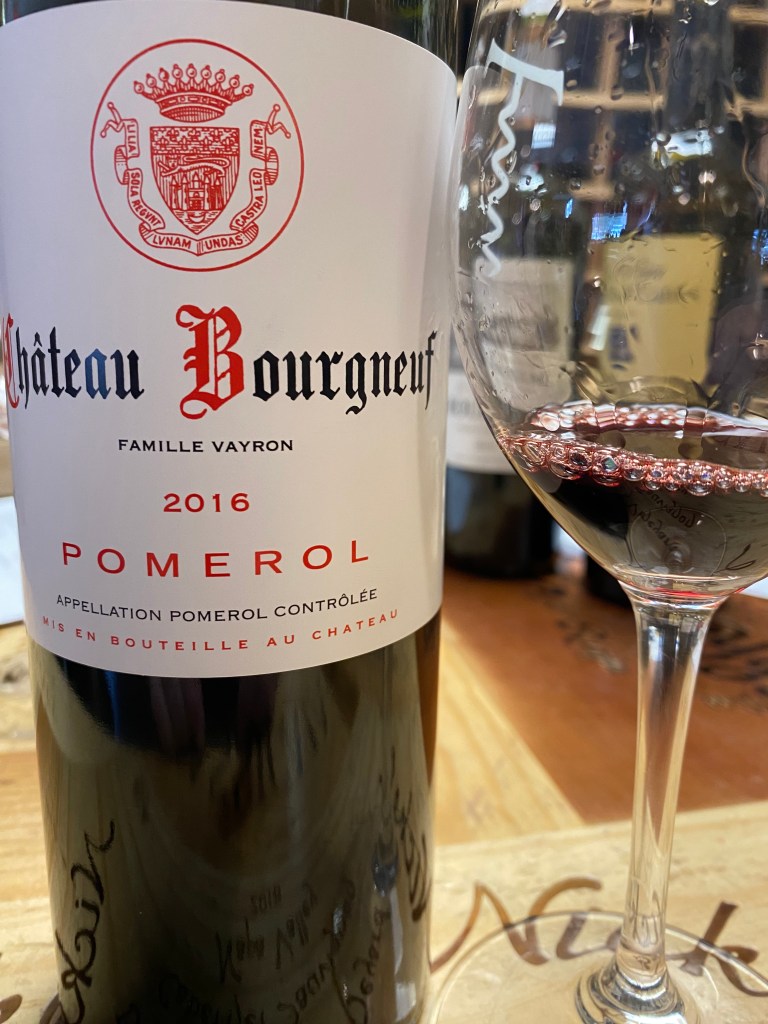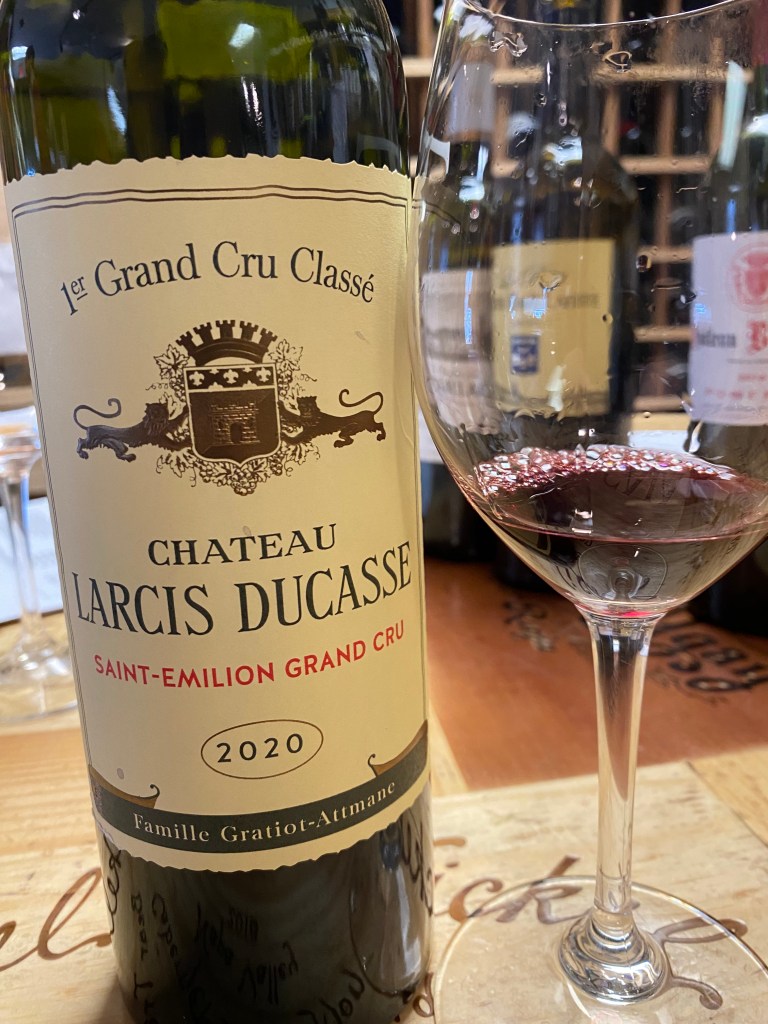My Bride and I had quite a Saturday together, after Sip & Shop at Vertical Detroit, we had a quick dinner downtown and then off to Livonia, for another wine tasting at The Fine Wine Source. For those of you that think that Nick and Nora are crazy, there were fifty-five wines offered at the first setting, and eighteen at the second tasting; we did not try tasting all the wines. This was more for my Bride, as there were plenty that I have already tasted, some I have already wrote about, and still more to be chronicled. Only so that you don’t worry, we bought two cases at Detroit Vertical and one case at The Fine Wine Source. Somehow, we will find space. I will mention three wines for the moment.

We had Chateau Bourgneuf Pomerol 2016 from Famille Vayron; and until 2012 was often labeled Chateau Bourgneuf Vayron. The Vayron family has had the estate since the 1840’s, Xavier and Dominique Vayron took over in the 1970’s, but their daughter Frederique is now in charge of the estate and winemaking. The vineyards are spread over nine hectares on the slope of the Pomerol plateau, neighboring some famous chateaus. The soil in the various vineyards go from pure clay, to a blend of clay and sand, to gravel. Ninety percent of the vines are Merlot and ten pen percent is planted with Cabernet Franc. Each parcel is harvested by hand separately and then they are initially processed in temperature controlled concrete vats, followed by twelve to fourteen months in Oak, with about a third in new oak. A deep ruby-red colored wine that offers notes of dark fruit, violets and mocha. On the palate there were tones of black cherry, plums, cassis, and mocha and finishing with a good count of cocoa and terroir.

We enjoyed some Chateau de Pez Saint-Estephe 2016, and Saint-Estephe is one of the Communes that one doesn’t encounter that often. Chateau de Pez is one of the oldest wines in Bordeaux. The Domain of Pez was established in the 15th Century, but the vineyards were added by the Pontac family (Chateau Haut-Brion) in 1585; and then lost by them during the French Revolution. In the 20th Century there was a series of owners until the present Rouzad family of Champagne house Louis Roederer and Pichon Longueville Comtesse de Lalande and others. There is about forty-two hectares of vineyards with fifty percent Cabernet Sauvignon, forty-three percent Merlot, four percent Petit Verdot and three percent Cabernet Franc. The vineyard sits on a high plateau (Pez) on soils of about a meter of gravel over a bedrock of limestone and clay. De Pez was classified as Cru Bourgeois in 1932 and continued through all the revisions to 2003; and then it was one of nine Cru Bourgeois Exceptionnels. The classification was annulled in 2007 and reintroduced in 2010 as a one-tier system. De Pez and five of the other Exceptionnels decided to forgo the new classification and they now are called Les Exceptionnels; and they have continued to stay apart even when in 2020, a new three-tier system was created (standard, Superieur, and Exceptionnel). The cellars were modernized in 2018, to allow for vinification of individual parcels, which are still hand-harvested. The fruit undergoes Fermentation with their skins for about twenty-one days in temperature-controlled oak vats. The wine is then transferred to oak barrels, of which forty percent is new, for between twelve and eighteen months. After one year in the barrel, the wine undergoes an egg-white fining, but later the wine is bottled unfiltered. This dark purple wine offers notes of dark fruits, and traces of mulberry, some licorice, and spices. On the palate a big wine with tones of black berries, cherries, licorice, tight tannins; a big chewy wine that has a nice long finish of rich fruit and terroir.

We had Chateau Larcis Ducasse Saint-Emilion Grand Cru – Classe B 2020 from the Famille Gratiot-Attmane. Chateau Larcis-Ducasse dates back to the 16th Century and is located on the Cote Pavie, adjacent to Chateau Pavie. It has been owned by the Gratiot-Alphandery family (now Gratiot-Attmane) since the 1940’s. The estate is about eleven hectares primarily planted with Merlot with a small planting of Cabernet Franc. The average age of the vines are thirty-five years of age and planted on soils that vary from alluvial sand deposits to limestone, clay, and chalk. The estate also produces a second wine called Murmure de Larcis Ducasse. The fruit is hand-harvested, and Initial Fermentation takes place in Concrete Tanks, and Malolactic Fermentation is done in oak barrels, and the wine is then aged for about two years, with two-thirds of the barrels being new. A dark dense ruby-red colored wine that offers notes of black cherry, spices, and chalk. On the palate there are tones of red and black cherries, a touch of raisins, some chocolate, with strong tannins, some heat, and finally finishing with a long count of spices, fruit, and terroir.
